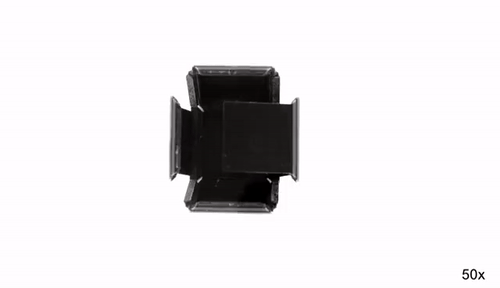overview
If you aren’t familiar with 3D printing, it’s essentially a new method that can allow us to create a physical object from a digital (3-dimensional) design. This works by laying down layers of a liquid/powdered form of plastic, metal or cement, and then combing all these layers togethe .
4D printing is the process of 3D printing an object which transforms itself into another structure as a result of environmental stimuli, such as temperature, light, etc. These objects transform due to the influence of external factors like external energy input, which can be anything from temperature to light. There are 3 main characteristics of 4D printing:
1. Ability to change in a way that is parallel with the desired functionality
2. Material distribution; made of smart materials
3. The structure is additively manufacturable
.gif)

Programmable Material
4D printers use 3D printers, the only difference is the input (material) that is used to build the object. With 4D printing we use “smart materials.” There are many ways to classify smart materials:
1. Materials that can sense and react to stimuli on their own. They don’t need an external material to carry out the functions.
2. Materials whose response is not encountered
3. Materials whose response to a stimulus is different from the stimulus itself
Depending on how these smart materials react to stimulus, they can fall into any of the following groups:
1. Shape Changers: these are SMs that respond to stimuli via strain/stress. Some may change in size or shape.
2. Optical Sensors: in this group, the materials response is perceivable by the eye. This includes thermochromic materials, triboluminescent materials or switchable mirrors
3. Convertors: these materials react in a signal that can be used as a stimulus for other smart materials.
4. State Changers: smart materials usually have a single condition in order to change; state changers are SMs whose conditions change in response to different stimulus.
Polylactic Acid (PLA)
The most common smart materials can be either a hydrogel or a shape-memory polymer. Hydrogels have swelling/shrinking behaviours when solvent molecules either enter or leave the polymer networks. Shape memory polymer on the other hand is a smart material that produces shape changes due to external stimulus conditions. These shape-memory polymers are also known as programmable materials since they’re able to execute their 3D “genetic code” whenever it’s triggered. Coupling the potential of 4D printing with smart materials will help change the future of wind turbines and energy production. The material that will be employed for 4D printing the proposed wind turbine blades is Polylactic Acid (PLA).

